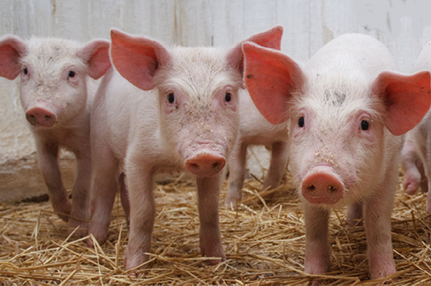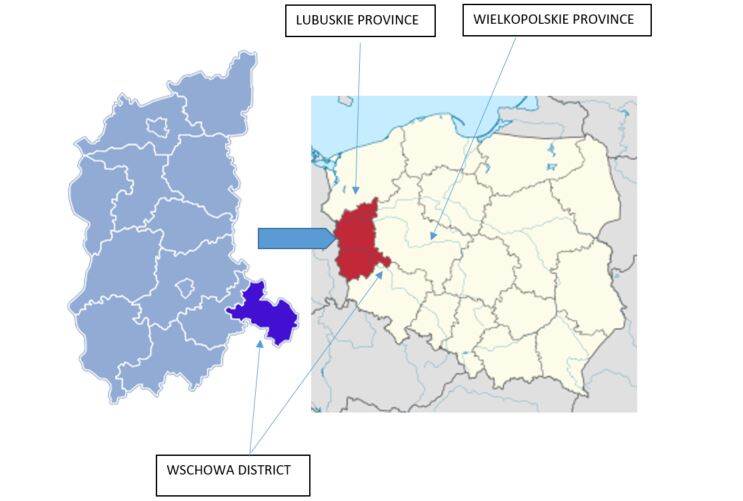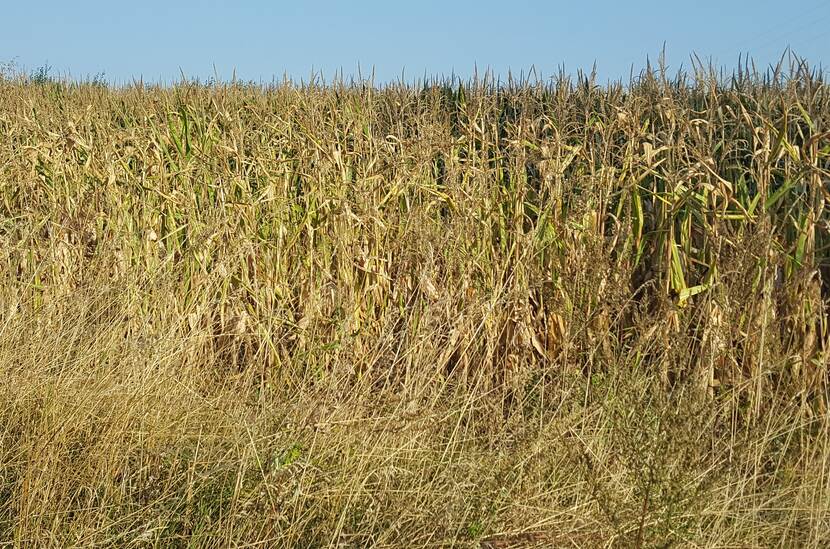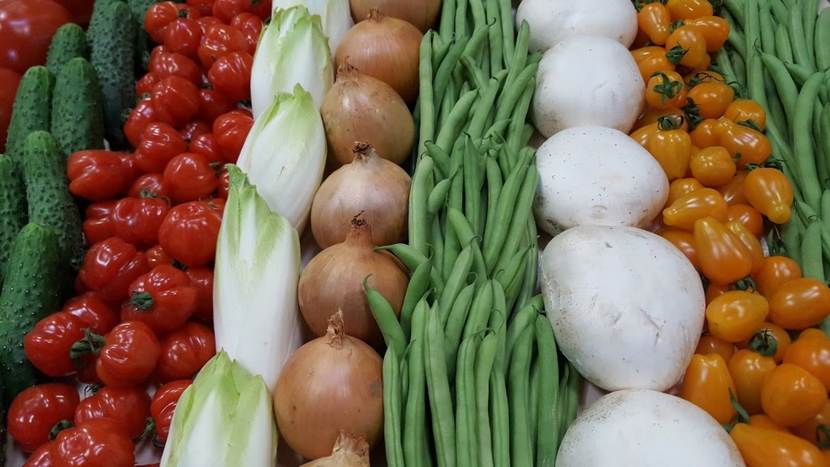Poland, brief agricultural news week 46, 2019
What happened in Poland last week? A brief overview of agricultural news.

First ASF case in Lubuskie region
The Polish authorities informed on the occurrence of the first case of African swine fever (ASF) in wild boars in the Wschowa district, in the Lubuskie province, as of 14 November 2019.
A positive result of the ASF test was obtained in samples taken from a fallen wild boar. According to the information contained in the epizootic investigation document, the boar came from a traffic accident. The location of the wild boar's corpse indicates an isolated case of this disease occurring in wild boars, without the possibility of an epidemiological and geographical link with previously recorded cases of ASF on the territory of Poland. Distance of ASF finding site in Lubuskie province from places of occurrence of this disease in the population of wild boars and outbreaks in pigs is over 300 km.
At present, on-site activities related to the fight against ASF are carried out by the competent authorities of the Veterinary Inspection and the Province Crisis Management Center (WCZK). Mr. Szymon Giżyński, The Secretary of State in the Polish Ministry of Agriculture and Rural Development, and Mr. Mirosław Welz, Deputy Chief Veterinary Officer, participate in the meeting of the WCZK crisis group.

Wschowa district in Lubuskie province neighbors Wielkopolskie province where biggest pig industry is located (36% of pig population in Poland). The possible protection zone (with trade restrictions) would concern areas in 3 provinces: Lubuskie, Dolnośląskie and Wielkopolskie. Additionally areas under Commission Decision 709/2014/EU will be designated in connection with the presence of ASF in this area, they will be the so-called Part II (restricted area), which indicates the occurrence of the disease in a given area in the wild boar population, and Part I (protection area).
The detection of ASF in wild boar in the west of Poland is also a big threat to Germany, in particular Brandenburg region, neighboring Lubuskie in Poland.
Source: CVO, Farmer

170bln pln for Polish animal organizations
Polish meat producers accused Polish animal organizations for damages made to the meat sector caused by many actions organized by the organizations. ‘Harmful ideologies’ of the animal organizations hit business of meat producers and strive to "liquidate Polish agriculture". Therefore the sector issued them an "invoice" amounting to PLN 167 614 086 000. "This is an estimate, which only in a small percentage and in some fields, reflects the real annual loss of farmers and the Polish state in a situation if in our country people with such harmful views would come to the fore," they added, justifying their idea.
The organizations ( Otwarte Klatki- Open Cages and Viva foundation) humorously replied to this proposal asking for ... correction of the invoice for the huge costs incurred by the entire society as a result of industrial animal husbandry for slaughter. The sector complains about the actions of animal organizations, which - in their opinion - seek to antagonize farmers with city dwellers and tell untruth about their business. The sector stress that ecological organizations and the media show a distorted picture of animal husbandry in Poland. "We see drastic scenes, selectively photographed or filmed on farms or slaughterhouses. These organizations are trying to convince the public that this is what reality looks like when it looks completely different. In fact farmers care for their animals and intend to care even more. Because they are aware of the fact that animal welfare is a condition of profitability of production and good quality meat.”
The fact is that more and more Poles do not eat meat, and there is also a strong consumers trend in Poland to be more aware of the source of the product as well as eat more healthier which means in the practice more vegetables and less meat.
Source: Okopress

Harvest of grain maize in Poland
The harvest of grain maize, which began at the end of September went smooth. Harvest conditions were good. The drying speed of the harvest was mainly hampered by the capacity of the dryers on farms. At the beginning of the harvest the corn kernel had 20-30% humidity. After the rains in Poland end of September, the humidity increased by about 5% and in some cases even by 10%. This may affect the quality of grain harvested in November. But the quality of maize grain from this year's harvest, in terms of mycotoxin content, is within the norm. The yield is worse this year. The estimated average corn grain yield this year will be around 6 t/ha, but in fact the crop fluctuates in a very wide range from 3 to 13 t/ha. It all depended on whether it was raining or not, but also on the soil class. Maize performed better on better soils with higher water content than on weak, sandy ones. There were even cases that the plantations were so weak that farmers gave up mowing them, because the cost of traveling with a combine harvester would be greater than the profit from the harvested grain. According to the Polish Association of Maize Producers Poland will collect 3.5-3.6 million tonnes of maize grain this year from 570-580 thousand ha, so from close to last year. However, in relation to the whole area sown with maize, which amounted to ca. 1.3 million ha, it is not even half. ‘Part of the plantation initially intended for grain, due to drought and shortage of feed, was harvested for silage. I think from 80 to 100 thousand hectares’ - says director Piątek from the Association. Despite the smaller harvest of corn grain, this year's prices are not good. According to the data of the Integrated Agricultural Market Information System, the price of dry feed grain (excluding VAT) is PLN 594/t and is lower compared to last year by approx. 15%. It is probably caused by decrease of pigs on the market, mainly due to ASF disease which causes smaller demand for ready-made compound feed. But Polish producers complain also about cheaper corn imported from Ukraine. With this regard Poland will request an AOB point during the Monday Agrifish Briefing in Brussels.
Source: Agropolska

Imported vegetables and fruit in Poland more often sold as local
Imported vegetables and fruit are increasingly more often labelled as Polish products. Retail chains mislabel products such as potatoes from the Netherlands, cabbage from Kazakhstan, onions from Austria and apples from Servia. Recent studies have shown that irregularities regarding labelling of country of origin happened in one out of three stores and in one out of ten products.
Due to droughts, prices of Polish vegetables were relatively high this year. This caused for many traders to start importing products from countries with production costs that were lower than those in Poland. According to Polish growers, the problem is not limited to retail chains but also occurs within the market. Imported products enter Poland by trucks and get repackaged by wholesalers who then sell the product to retailers as a local.
Source: Agropolska

Warsaw in top 10 most vegan-friendly cities in the world (ranking from 2018)
According to the opinion-forming portal Happy Cow, Polish capital is one of the most vegan friendly cities in the world, scoring with 7th position in 2018 (1st – London, 2nd – Berlin, 3rd – New York City). Although in 2017 Warsaw held the 3rd position, the city constantly notes an increasing number of vegan spots. The ranking is based on three factors: the number of vegan restaurants in a 5-mile radius in the most vegan restaurant-dense area in each city, the number of vegan/vegetarian/veg-option restaurants in the same 5-mile radius, and the impression of the over-all vegan-friendliness of the city. Variety of vegan restaurants’ profiles is huge: traditional, modern, fast food, Polish, Italian, Asian… and a lot more. We are looking forward to the next ranking, which should be published soon, to be able to follow annual changes in the food market trends. But covering the issue globally, we can notice different reasons of growing vegan food market globally: next to direct impact on health, more often the increasing awareness of climate issues and animal welfare plays its role. This means that the people become more conscious consumers in terms of broad perspective of sustainability.
Source: Happy cow